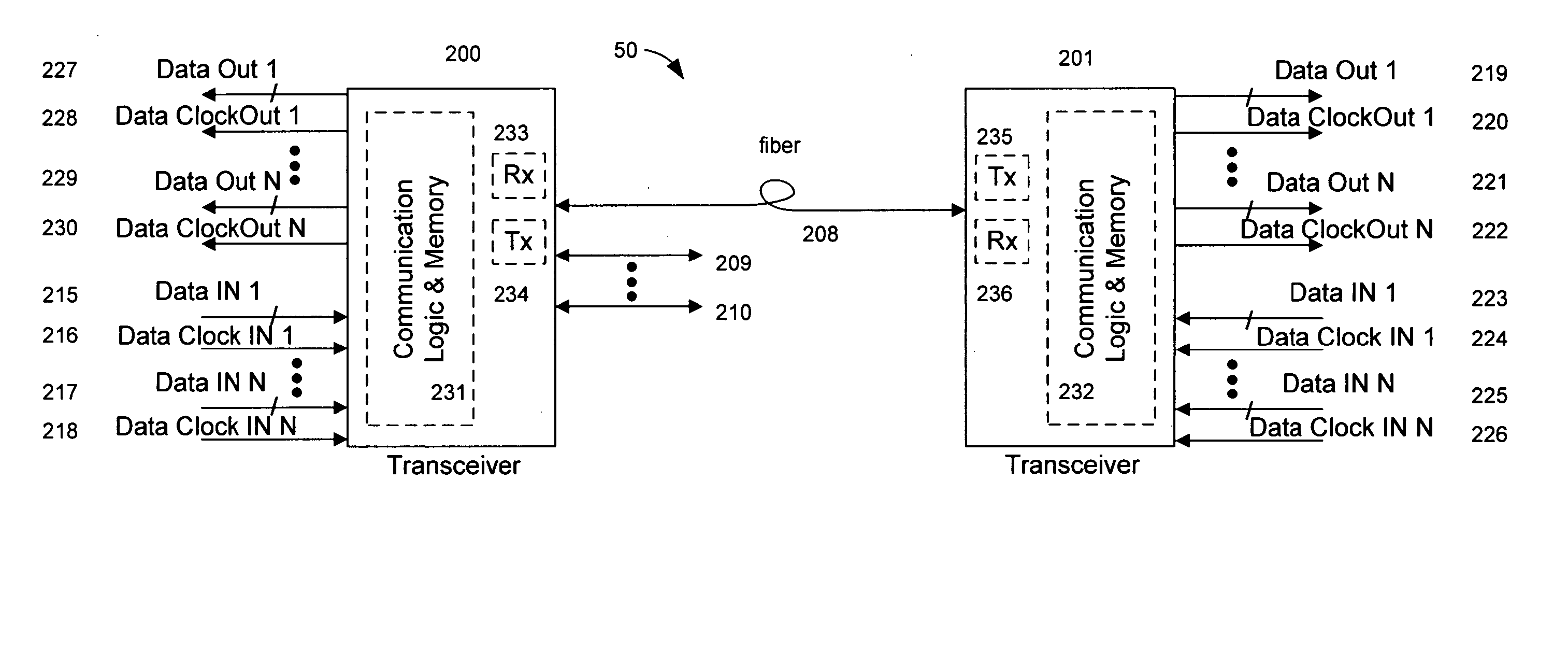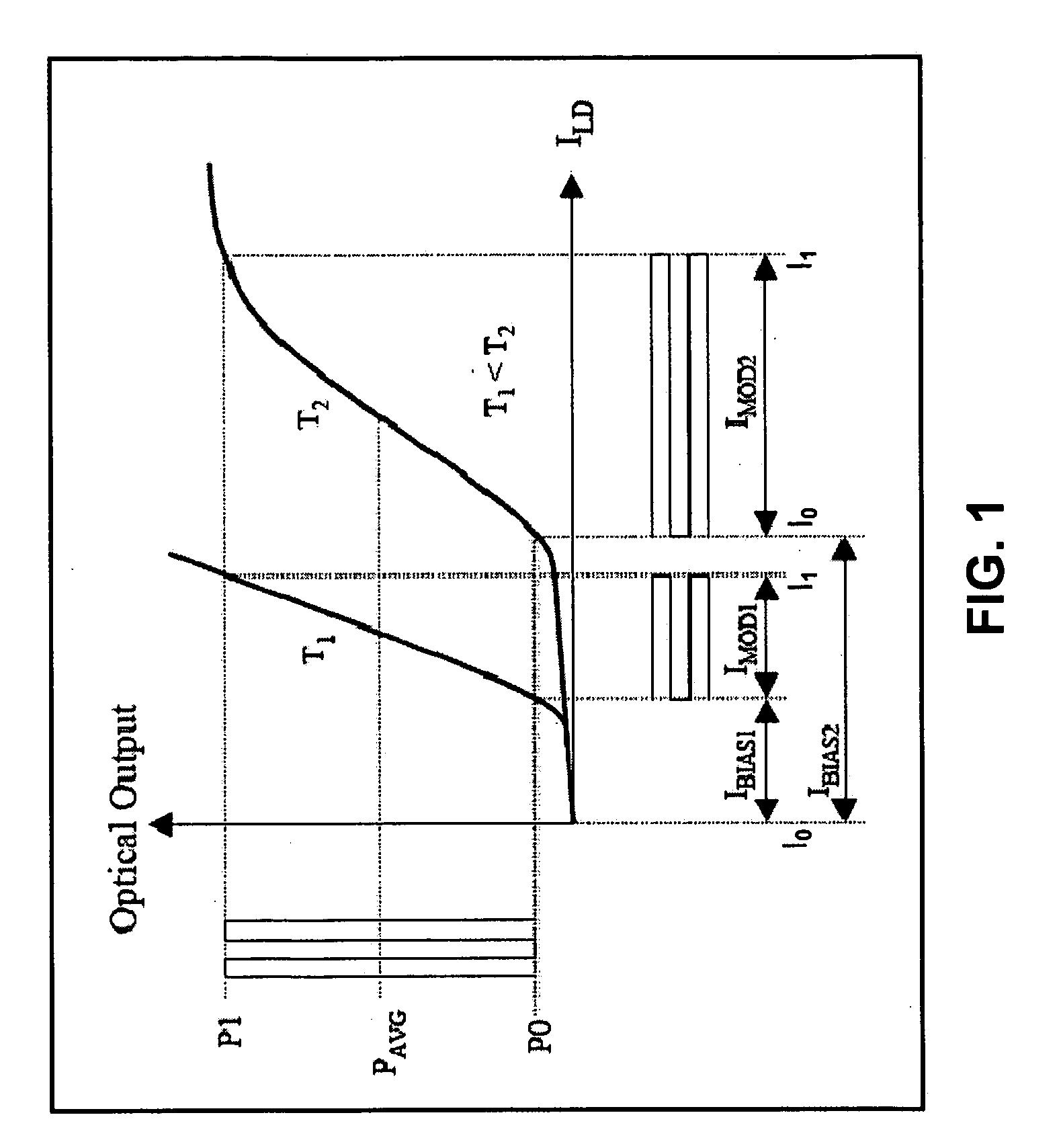Controlling the extinction ratio in optical networks
a technology of optical fiber network and extinction ratio, applied in the field of optical fiber network, can solve the problems of increased transmitted power due to non-ideal, power penalty, etc., and achieve the effect of accurately controlling extinction ratio, enabling the control of extinction ratio in optical fiber network, and reducing power penalty
- Summary
- Abstract
- Description
- Claims
- Application Information
AI Technical Summary
Benefits of technology
Problems solved by technology
Method used
Image
Examples
Embodiment Construction
FIG. 2 shows a high-level fiber optic data network 50. The network includes a first transceiver 200 in communication with a second transceiver 201 via a fiber 208. The first transceiver 200 and the second transceiver 201 include transmitter circuitry (Tx) 234, 235 to convert electrical data input signals into modulated light signals for transmission over the fiber 208. In addition, the first transceiver 200 and the second transceiver 201 also include receiver circuitry (Rx) 233, 236 to convert optical signals received via the fiber 208 into electrical signals and to detect and recover encoded data and / or clock signals. First transceiver 200 and second transceiver 201 may contain a micro controller (not shown) and / or other communication logic and memory 231, 232 for network protocol operation. Although the illustrated and described implementations of the transceivers 200, 201 include communication logic and memory in a same package or device as the transmitter circuitry 234, 235 and ...
PUM
 Login to View More
Login to View More Abstract
Description
Claims
Application Information
 Login to View More
Login to View More - R&D
- Intellectual Property
- Life Sciences
- Materials
- Tech Scout
- Unparalleled Data Quality
- Higher Quality Content
- 60% Fewer Hallucinations
Browse by: Latest US Patents, China's latest patents, Technical Efficacy Thesaurus, Application Domain, Technology Topic, Popular Technical Reports.
© 2025 PatSnap. All rights reserved.Legal|Privacy policy|Modern Slavery Act Transparency Statement|Sitemap|About US| Contact US: help@patsnap.com



